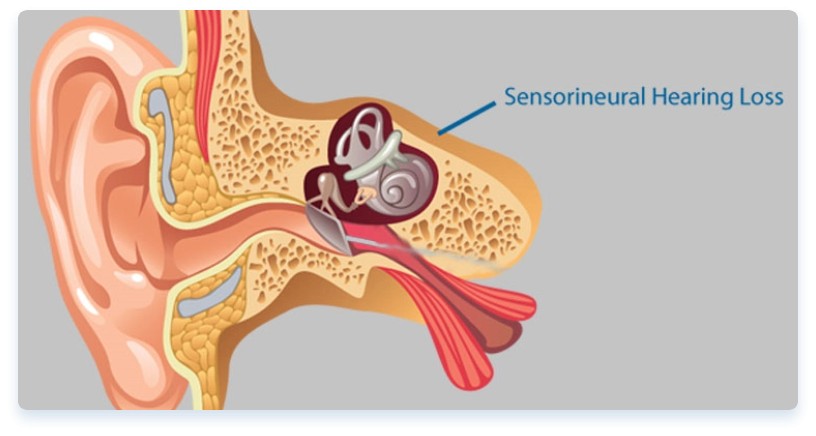
Sensorineural Hearing Loss
Sensorineural Hearing Loss
Sensorineural hearing loss (SNHL) is a type of hearing impairment that occurs due to damage to the inner ear (cochlea) or to the nerve pathways from the inner ear to the brain. This form of hearing loss is the most common type, often associated with aging, exposure to loud noise, genetic factors, and certain medical conditions.

Causes
- Aging : As people age, the hair cells in the cochlea gradually deteriorate, leading to a gradual decline in hearing ability. This age-related hearing loss typically affects high-frequency sounds first.
- Noise Exposure : Prolonged exposure to loud noises, such as those from industrial environments, concerts, or headphones at high volumes, can damage the hair cells in the cochlea, leading to permanent hearing loss.
- Genetics : Genetic predisposition can play a significant role in SNHL. Mutations in certain genes can cause congenital hearing loss or make individuals more susceptible to hearing loss later in life.
- Ototoxic Medications : Certain medications, such as some antibiotics (e.g., gentamicin) and chemotherapy drugs (e.g., cisplatin), can damage the inner ear and cause hearing loss.
- Medical Conditions : Conditions like Ménière's disease, acoustic neuroma (a type of noncancerous tumor), and autoimmune inner ear disease can lead to sensorineural hearing loss.
- Infections : Viral infections, such as measles, mumps, or meningitis, can damage the inner ear or auditory nerve, resulting in hearing loss.
Symptoms
- Difficulty Hearing Conversations : Individuals with SNHL often find it challenging to understand speech, especially in noisy environments.
- Muffled Hearing : Sounds may seem muffled or unclear.
- Tinnitus : Ringing, buzzing, or other noises in the ear can accompany sensorineural hearing loss.
- Difficulty with High-Pitched Sounds : High-frequency sounds, such as women's and children's voices or the chirping of birds, may be harder to hear.
Diagnosis
- Audiometric Tests : Pure-tone audiometry and speech audiometry tests measure the degree and type of hearing loss.
- Imaging Tests : MRI or CT scans may be used to identify any structural issues or tumors affecting the auditory nerve or inner ear.
- Medical History and Physical Examination : A thorough history and examination help identify potential causes and rule out other types of hearing loss.
